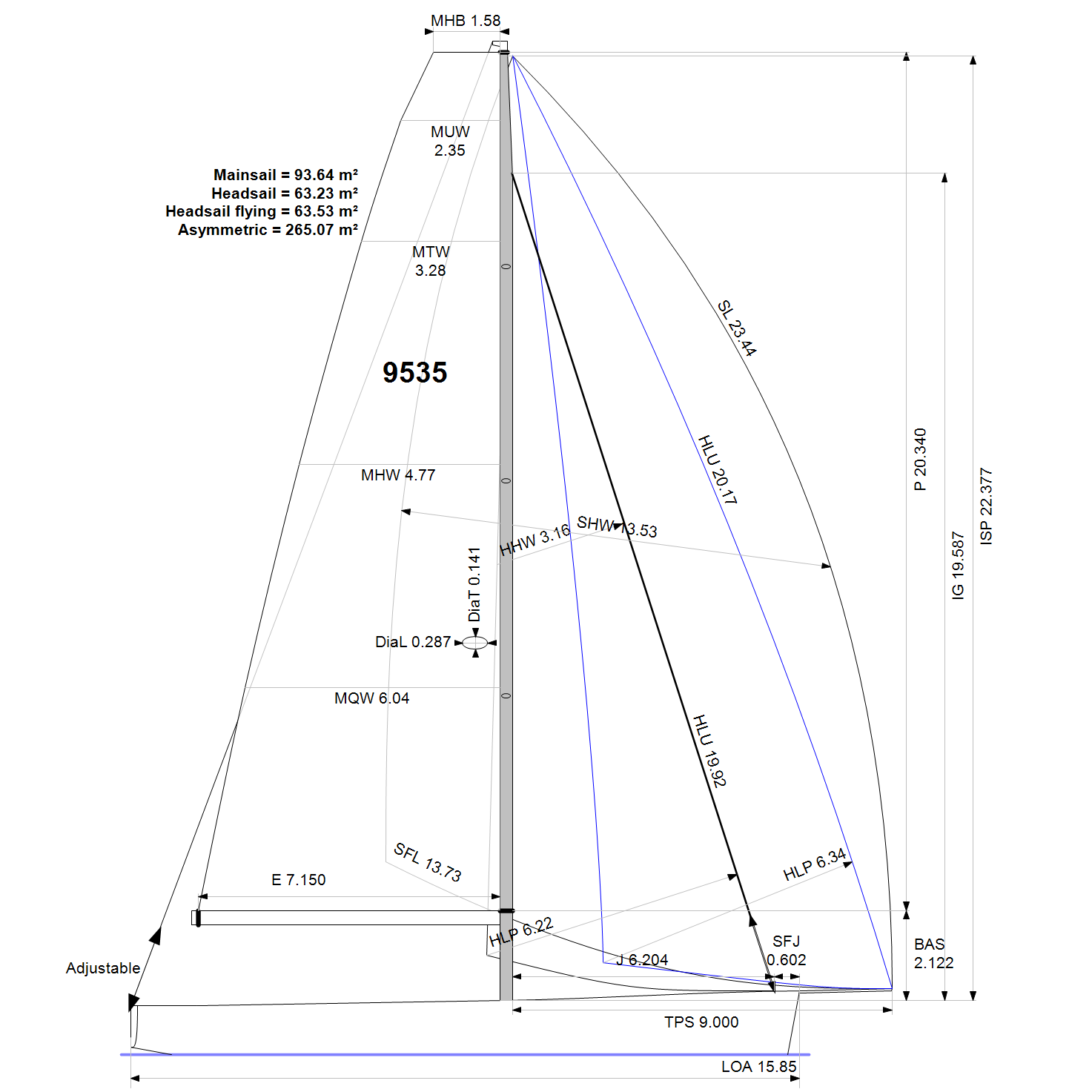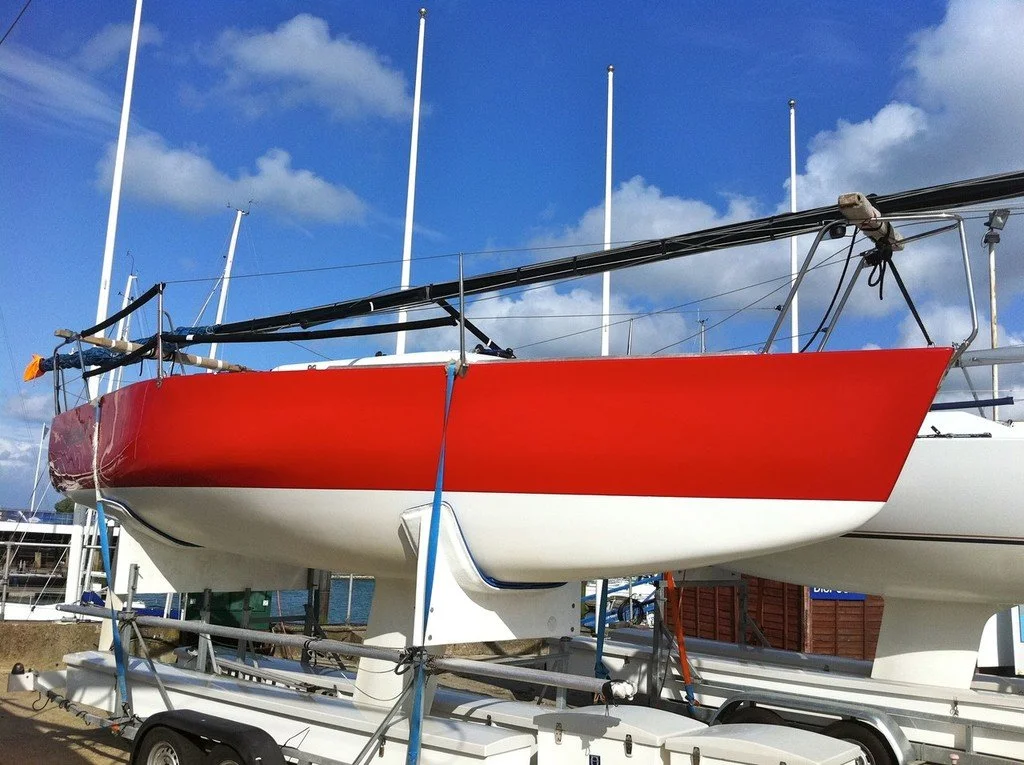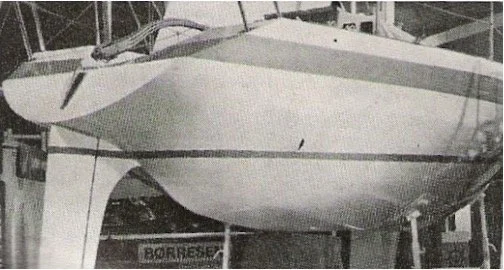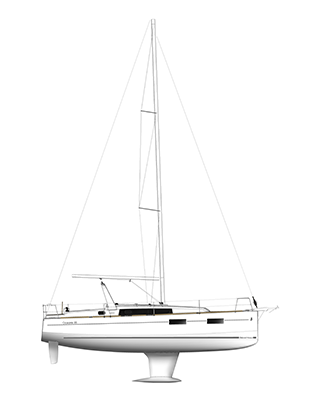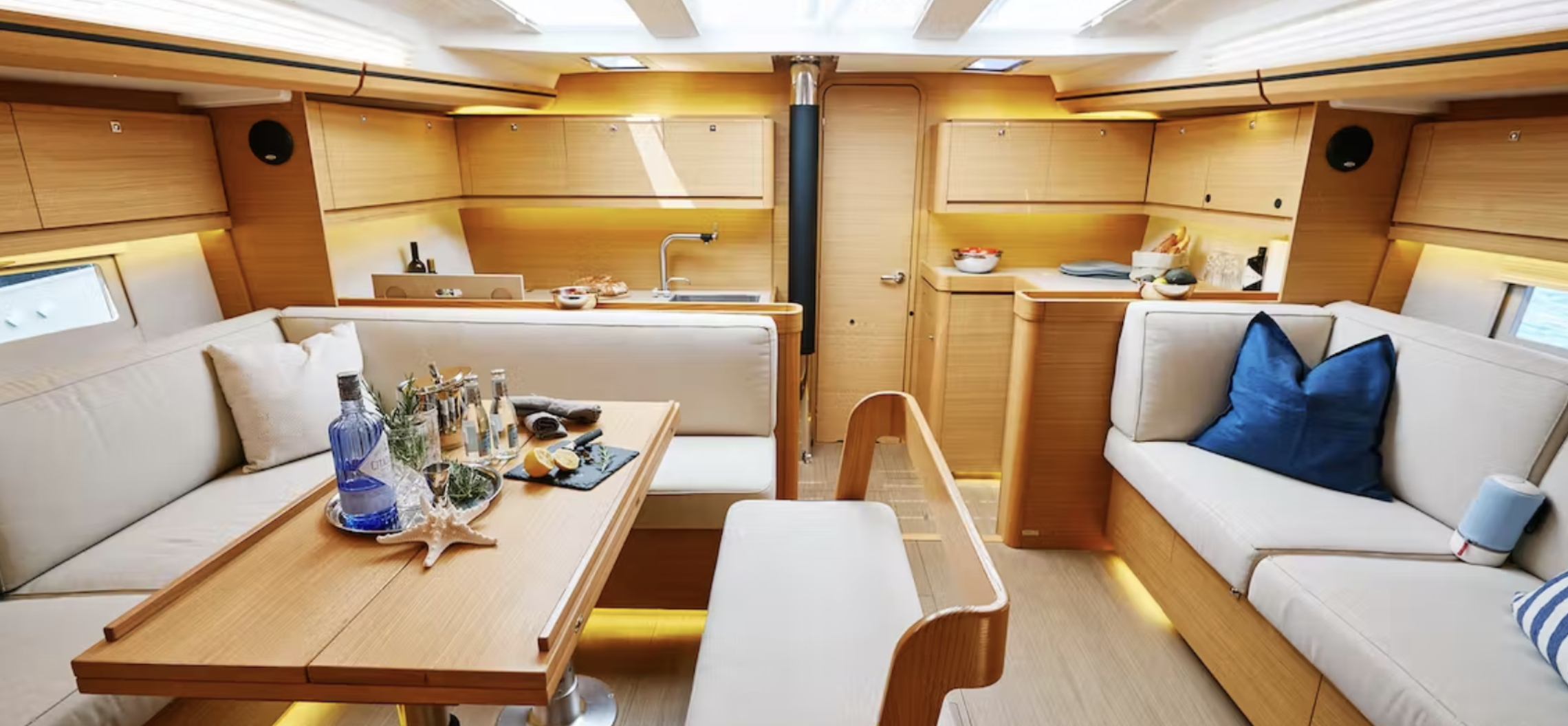Ramblings on “distortion”, and how to avoid it.
Watching a potential train wreck unfold with the 2022 Sydney Hobart results this week, made me contemplate the bigger picture in regards to yacht design. It seems that the work of the Naval Architect has now more than ever, split into two barely overlapping disciplines; designing to a racing rule or designing for all round efficacy.
I know this is over simplistic, but long gone are the days when a genuine “cruiser-racer” or even “racer-cruiser” could have a realistic chance of winning a serious race.
“What does it matter?” you may well ask. If all you want to do is go racing, then the answer is probably “not a lot”. You will get there fast, perhaps a little uncomfortably, you will have seen nothing on the way, and the reams of safety regulations that you have complied with, coupled with 24 hour monitoring and rescue on call, will mean that you are probably fairly safe. Once your boat is out of date, (10-15 years) its value will have collapsed, its repurposing as a more rounded vessel will be financially impractical, and the landfill site will be beckoning.
The phenomena of designers distorting the functional shape and appendages of a yacht to gain a rating advantage is not a new one.
A few weeks ago we published an article on the restoration of In reference to the article DAME PATTIE. One of her design team, Barry Spradbrow sent in this fascinating comment.
“I started to work for Warwick (Hood) and to study Naval Architecture at UNSW in 1966. I can add a little comment about the bustle. DAME PATTIE was built and sailing when the first photos of Intrepid were published. A lot of head-scratching in the office, but it was more or less obvious what Olin Stephens was trying to achieve with the bustle on Intrepid. The quick and dirty solution was to add a plasticine bustle to the towing tank model, and to try it in the tank at Sydney Uni. That is why there are no drawings - the modelling was done by Alf Lean who drew the lines plan. The results were encouraging, and the boat was a fraction faster. (I don't remember if a wooden bustle on the model was made later, but probably.) So the boat was pulled out, and Bill Barnett added the bustle. It was all done in a rush and turned out to be a bit of a disaster - the boat might have been faster in flat water, but now showed an increased tendency to hobby-horsing in waves, which in turn presumably affected air flow over the sails. Etc. But by then they had run out of time to do anything about it, and had to get the boat off to the USA where it didn't really have a chance against Intrepid. It's great that you have done this work, Frédéric, and you probably made a good decision in dropping the bustle.”
Warwick Hood working on DAME PATTIE
Perhaps the most frequent example of rules trumping seaworthiness, came with the introduction of IOR in the 1970’s
Ian Ward in his SWS article “Wally Ward Designs and the CA’s” explains it well
In 1970, the new IOR rule was introduced. As the aim of designing to beat the rules is to make the boat ‘appear’ as slow as possible, ironically, the older boats of the 1960’s appeared ‘too fast’ under this new rule and so they were penalised with a heavy handicap.
The IOR rating rule encouraged wide short boats with limited stability. A narrow waterline and large beam on deck, combined with a high centre of gravity, which meant that crew weight provided a significant proportion of stability at small heel angles. This developed into the situation about 1977 when the boats winning in most of the smaller IOR categories had all internal ballast, often with an unballasted daggerboard, becoming unsafe for offshore racing.
The idiosyncrasies of hollow waterlines, measurement bumps, topsides with tumblehome, large cut off bustles aft, forward raking transoms etc are all tricks intended to beat the rules, but none of these features necessarily produced either a faster boat ‘for its size’ nor a more seaworthy boat.
In many ways, adherence to rating rules seems to have been rather counter-productive, often sacrificing good handling and balance for improved rating may in fact result in a race winner. The introduction of fin keels also upset both hull balance and directional stability, so techniques were developed with large balanced rudders, geared wheel steering and trimmers operating travellers to dump the main in gusts which helped make this new generation of boat manageable.
It could equally be concluded that even todays IMS, IRC & ORC measurement systems encourage light displacement, low ballast ratio, high topsides, plumb stems and wide sterns, because this configuration is the most favoured under the rule.
As a result, well behaved, nicely balanced boats are no longer required, nor appreciated in order to win races.
One of the most upsetting recent examples of distorting a beautiful design, to game a rule, comes from one of the greatest yachts of all time
Examine pictures of DORADE sailing in the 2020’s, and you will be struck by her “token” mizzen sail. This handkerchief-sized sail that runs only two-thirds up the mizzen, allows the boat to keep her yawl rating but the reduced area allows clean wind to reach the staysails. I can’t help thinking that Olin Stephens, famous for his sportsmanship and integrity would be turning in his grave.
So for those of us who don’t mind trying hard in local racing, but what an elegant, safe, comfortable and multidimensional sailing experience, what do we do?
Firstly, I suggest that you look for a boat that has been designed with no rating rules in sight… But nowadays even that might not be enough.
In the world of cruising yachts, the bastardisation these days comes not from the rules, but from the customers inexhaustible desire for volume.
The modern concept of "the cruising sailboat" is often about sacrificing the ability to sail in order to give the boat a homely, roomy feel, filled with conveniences. Yes, maybe you can sail these caravans in most directions with 12 kts of breeze and small seas, but try going to windward in 25kts and a Port Phillip chop and it will be a miserable ride, taking skill and perseverance make any distance to weather. Turn downwind and it will be a wrestle to keep control.
By applying the latest control methods such as large travellers, twin balanced rudders & wheels, bow thrusters, autopilots and quick reefing systems, the design sacrifices of the hull can be ‘managed’ to some extent, but perhaps at the cost of seaworthiness, safety, handling and pure sailing pleasure.
Given this it seems unsurprising that our Marinas are clogged with pumped up, mass produced cruisers.
We should seriously ask ourselves whether the “accessible” modern cruiser is a force for encouraging participation in sailing in general, or in fact it’s the opposite, preventing people from engaging in a meaningful way with the time honoured skills and satisfaction of challenging seamanship.
So what’s the answer?
My solution is, to be very clear and honest with yourself about how you are intending to gain pleasure from your sailing.
If you are seriously looking to win races, then find a design that takes advantage of every nook and cranny in the rating handbook. But don’t expect to be comfortable, don’t expect to get into tranquil shallow anchorages and don’t expect anything less that extreme capital depreciation.
If you’re interested in reaching from one temperate anchorage to another, under little time pressure, whilst ensuring that the daiquiris are cold when you arrive, then the modern lines of mass produced cruising boats will suit you well. Don’t expect to win anything other than performance handicap races and don’t expect compliments on your aesthetic choices.
There are of course some modern yachts that fit into neither of the above categories. Often expensive, but regarded as well made, well designed brands like Rustler, Najad or the older style Nautor Swans.
And if none of the above work for you, perhaps you should consider a Classic Wooden Boat. Formed by vernacular rather than dogma, beautiful to behold, usually great value and as often as not, they come with a community or likeminded individuals ready to listen to your woes, and rejoice in your quixotic adventures!

